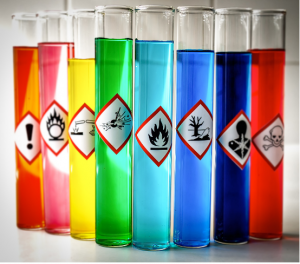
EPA flouts the law, science, and its obligation to protect public health yet again: The 1-bromopropane final risk evaluation
Richard Denison, Ph.D., is a Lead Senior Scientist.
Today, the Trump EPA released its second final risk evaluation and determination under the reformed TSCA, for the carcinogenic solvent, 1-bromopropane (1-BP). [pullquote]EPA has once again ignored expert scientific input it received from its own advisors.[/pullquote]
As was the case with the final document for methylene chloride – which has already been challenged in court (see here and here) – EPA has doubled down on the illegal, unscientific, and un-health protective approach it has taken in all of its draft risk evaluations for the first 10 chemicals reviewed under TSCA.
EDF will be closely examining this final document, but it is already apparent that EPA continues to grossly and systematically underestimate the exposures to and risks of 1-BP to the general public, workers and the environment.
Below are four examples of the flaws; each was raised by EPA’s own Science Advisory Committee on Chemicals (SACC) in its peer review as serious deficiencies – expert scientific input that EPA has simply chosen to ignore in finalizing the document:
- Ignoring all 1-BP exposures and risks to the general public. Based on an illegal assertion that it can ignore any release of 1-BP potentially covered by another law EPA administers, the agency continues to dismiss entire pathways of known exposures of the entire US population to the nearly one millions pounds of 1-BP released annually to our air, water and land. These releases particularly affect communities of color and low-income communities who are more likely to live near facilities and sites that release or are contaminated with 1-BP.
- Throwing workers under the bus. EPA continues to systematically understate the risk 1-BP presents to workers across the entire supply chain and lifecycle, including by falsely assuming workers will wear personal protective equipment (PPE) that is universally effective and using a cancer risk benchmark that is 10-100 times too lax. EPA does so even though TSCA specifically identifies workers as a vulnerable subpopulation warranting special protection.
- Failing to address exposure and risk to children, a susceptible subpopulation, from 1-BP’s use in dry cleaning. EPA dismissed the risk to this susceptible subpopulation based on two highly flawed assumptions: 1) that acute health effects are somehow not applicable to children, and 2) that chronic exposures are somehow not relevant to children. Comments EPA received on its draft risk evaluation squarely rebutted both of these assumptions.
- Steadfastly refusing to account for even obvious combined exposures. Despite critical comments from the SACC, EDF and others, EPA fails to account for real-world cases where a worker is exposed to 1-BP through both inhalation and skin exposure, or where a worker exposed at work is also exposed as a consumer at home. Bizarrely, EPA asserts that doing so would overestimate exposure, when the opposite is in fact the case: EPA’s failure to address combined exposures clearly underestimates risk.
As was the case in the draft 1-BP risk evaluation, EPA has employed a host of unwarranted and unsupported assumptions and methodological approaches that led the agency either to avoid identifying unreasonable risk when it should have, or to understate the extent and magnitude of the unreasonable risks it did identify.













One Comment
Worrying about the exposure side of risk assessment (RA) runs the risk of the models (occasionally actual data) being investigated and called too conservative…and in any case, has nowhere near the effect that changing the ‘safe dose’ (on the hazards side of RA) does. That depends on how toxicity studies are evaluated…and that depends on finding all, and evaluating them objectively (as EPA is supposed to–“systematic review”).
1-BP was one of the first ones to be assessed under that mandate, no surprise there is no logic comparing their bibliography (where they list which studies were judged on and off topic; i.e. their relevance): e.g. “15” human hazard studies were judged reliable enough to undergo SR in the text (pg. 73), but the bibliography says ~125 studies were relevant to human toxicity. In any case, in SR you are supposed to do the SR to judge which is the most reliable study/ies, thus your screening step is only for “relevant?”
EPA says the human toxicity findings (the lowest adverse effect dose, LOAEL) ranged from 100 to 1,000 ppm; as well as claiming that their assessment is thorough and accurate. Checking PubMed alone, I find 11 published results on 1-BP with LOAELs at 50 -100 ppm! (https://www.ncbi.nlm.nih.gov/sites/myncbi/anthony.tweedale.1/collections/59892256/public/). That last one might have a LOAEL of just 10 ppm (only having read the abstract, but even a no-effect (NOAEL) of 10 ppm is 12 times or so lower than their claimed main NOAEL, that the allegedly safe dose i based on.
One can also ask, did they even locate those 11 studies ((no doubt there exist a few more) and mark them as reliable? (‘on topic’ is their lingo). Abstract 1 was not (an in vitro lo dose supporting finding for 1-BP’s carcinogenicity). Abstracts 8 and 11 are both in vivo neurotox findings at 50 ppm, found but labelled off topic for env’l hazards (when they are on topic for human hazard too).
In sum, a not, very well studied chem by academics, but as usual, already a few low-ish dose tox findings ignored. Et tu, activists? The hazard literature review is all that matters,